State of Minnesota vs. Max Mason. Case No. 22590. 1921-1922. Brief and Argument for the State.
Images
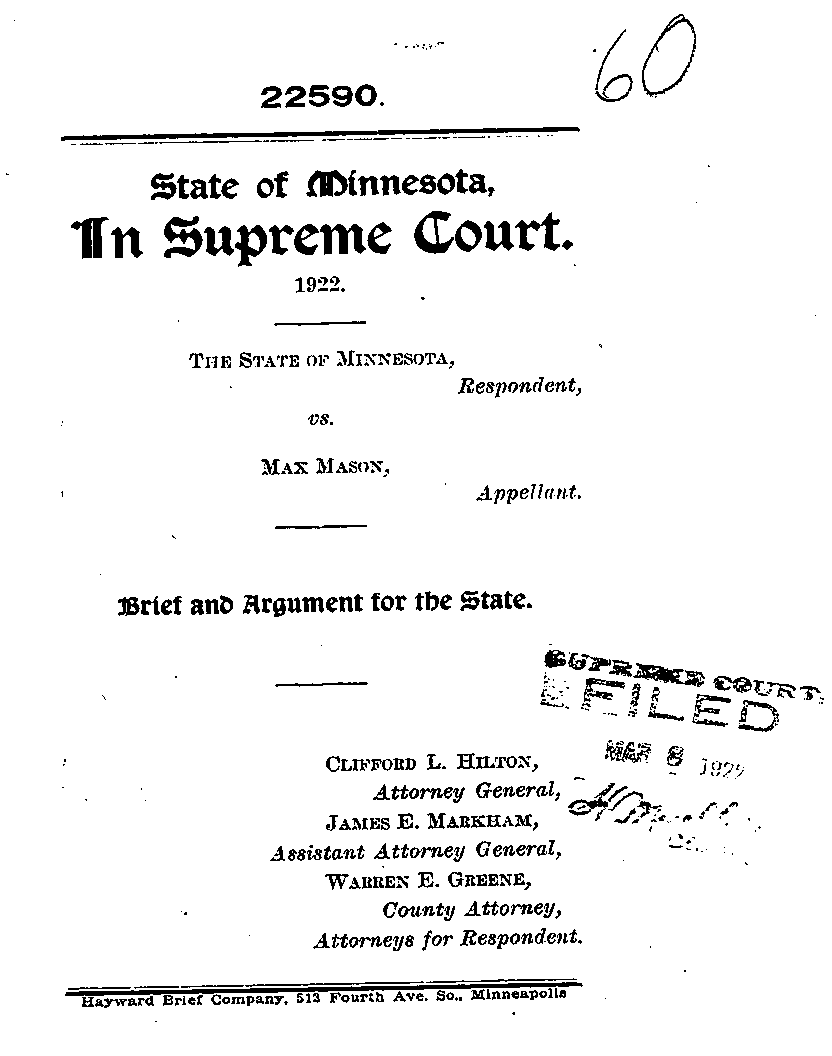
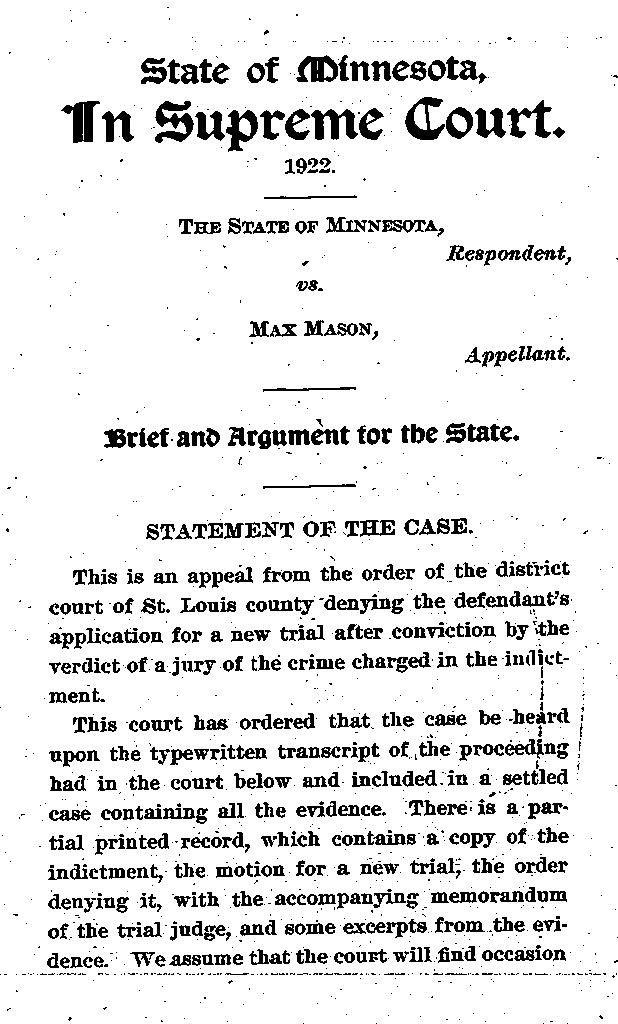
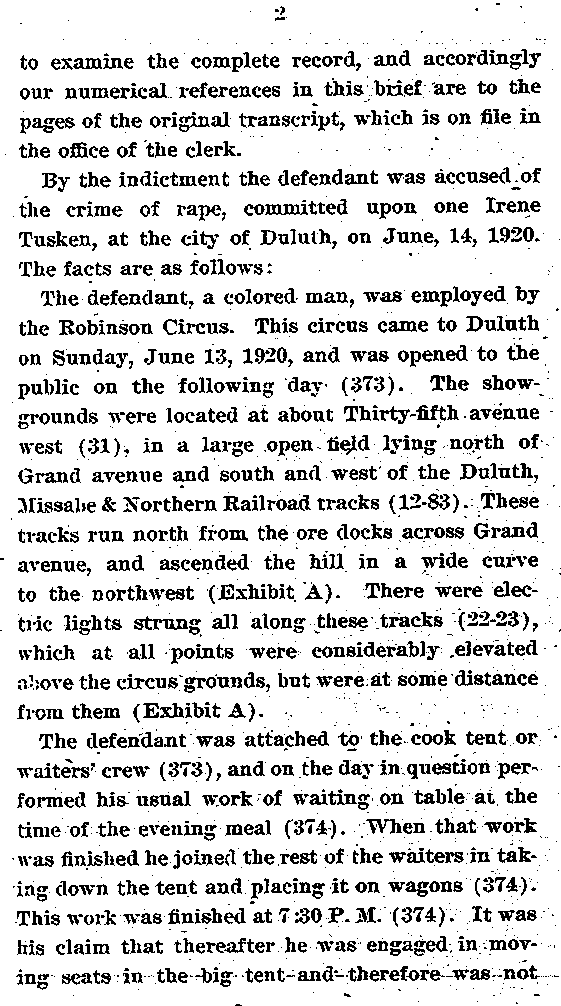

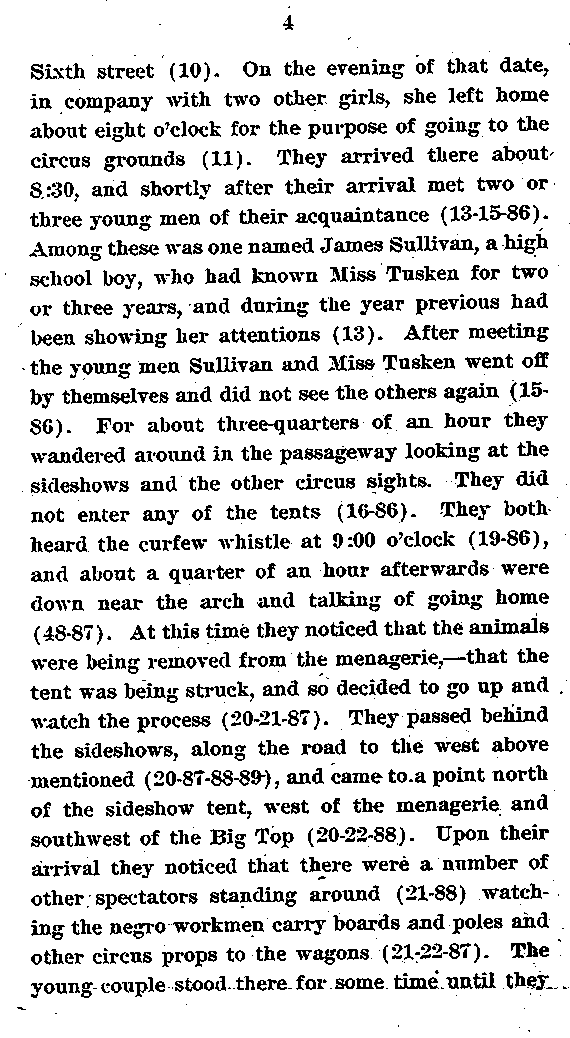
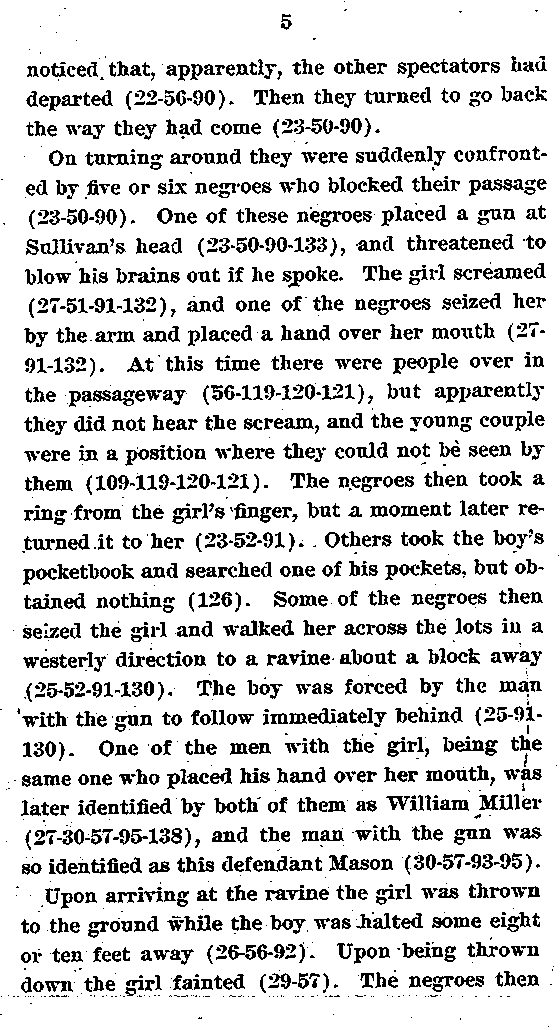
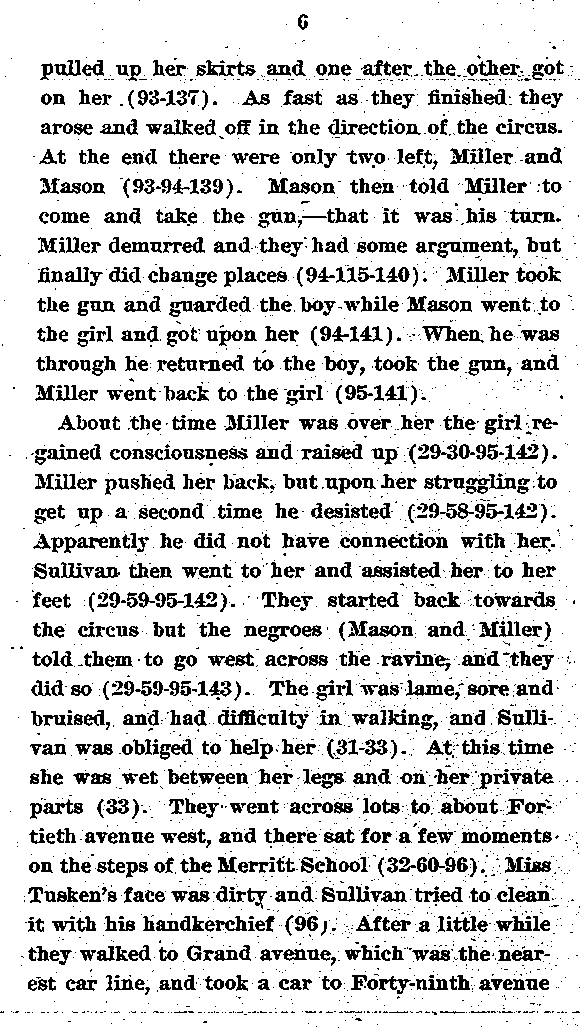
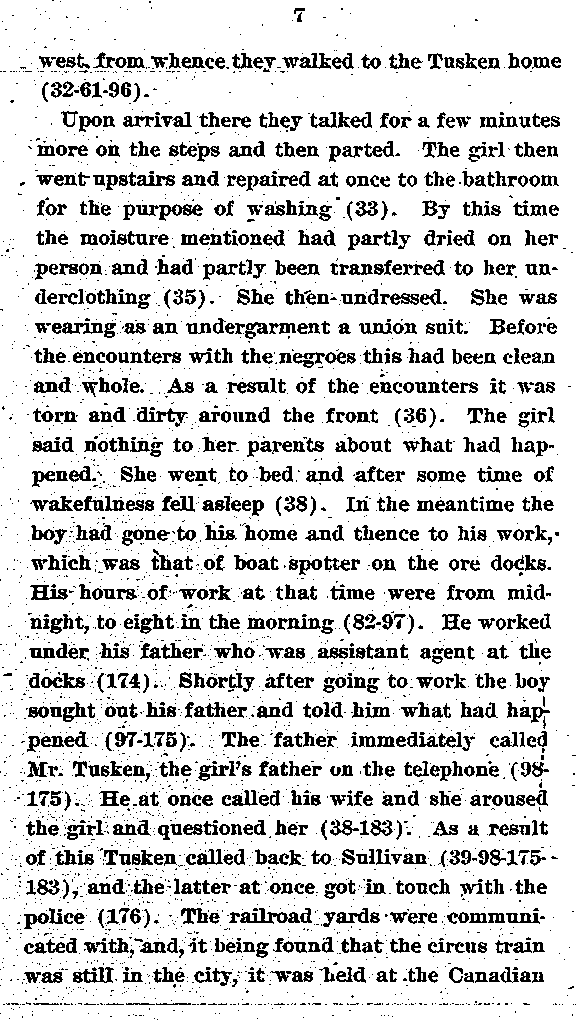


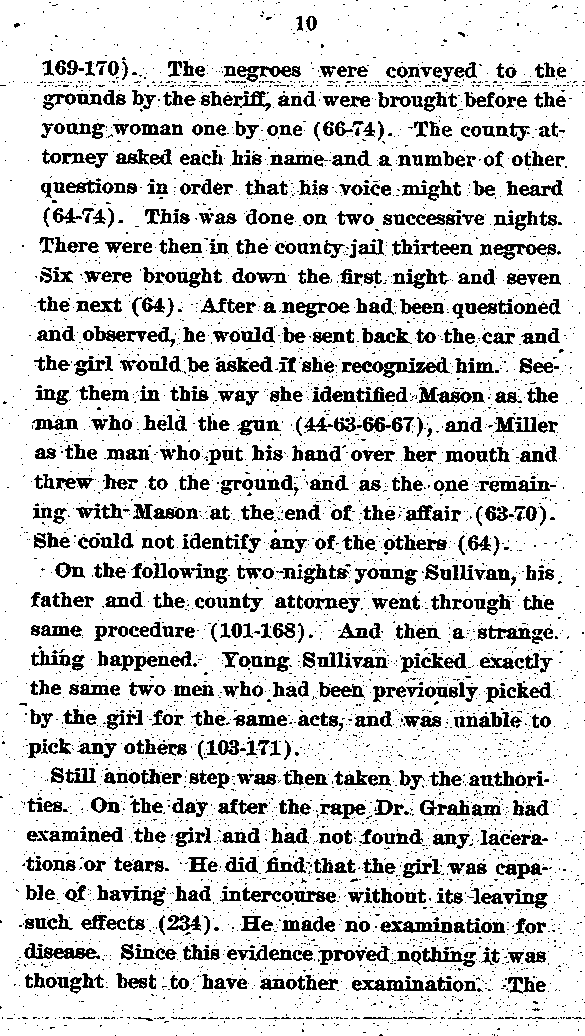
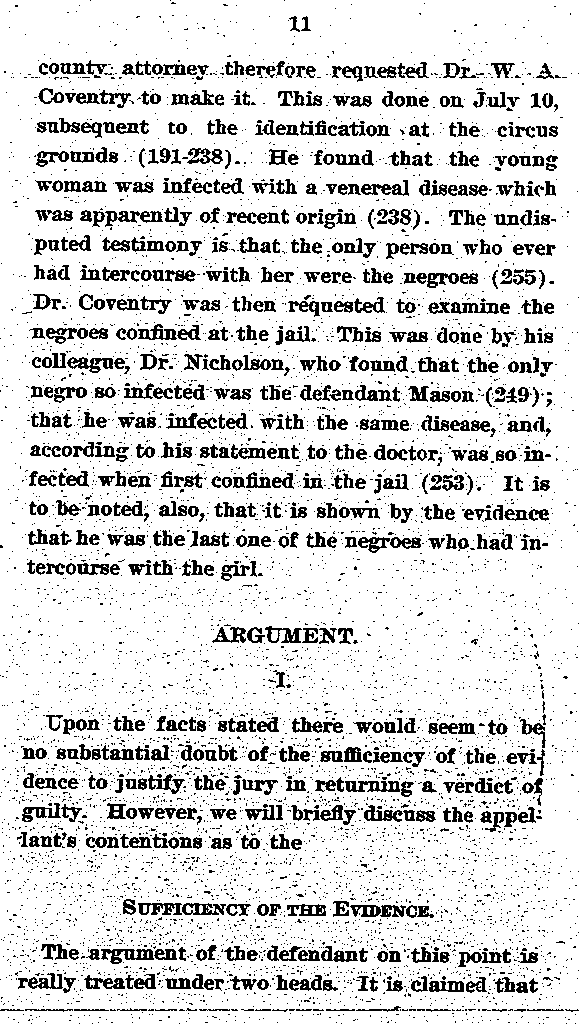
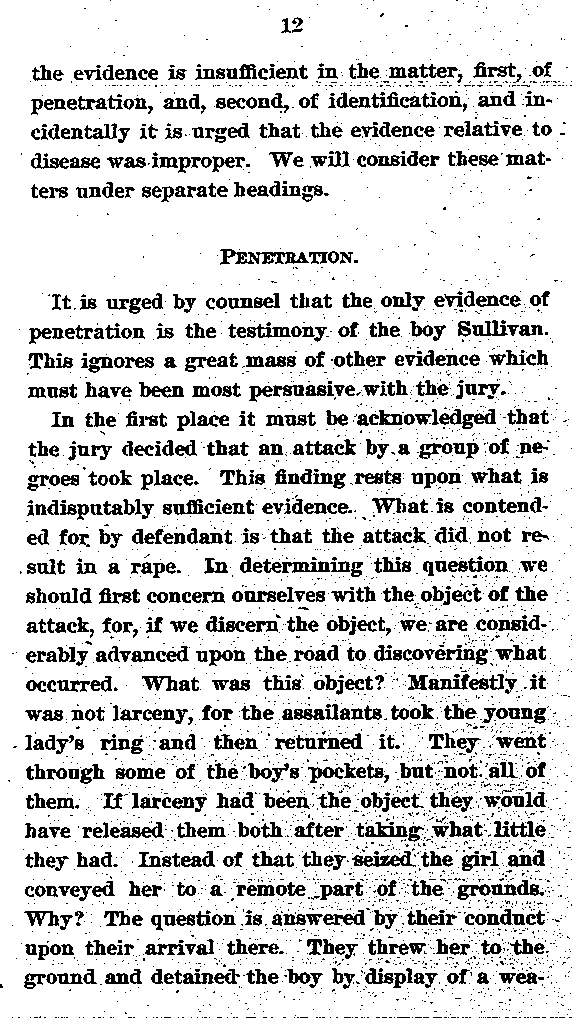
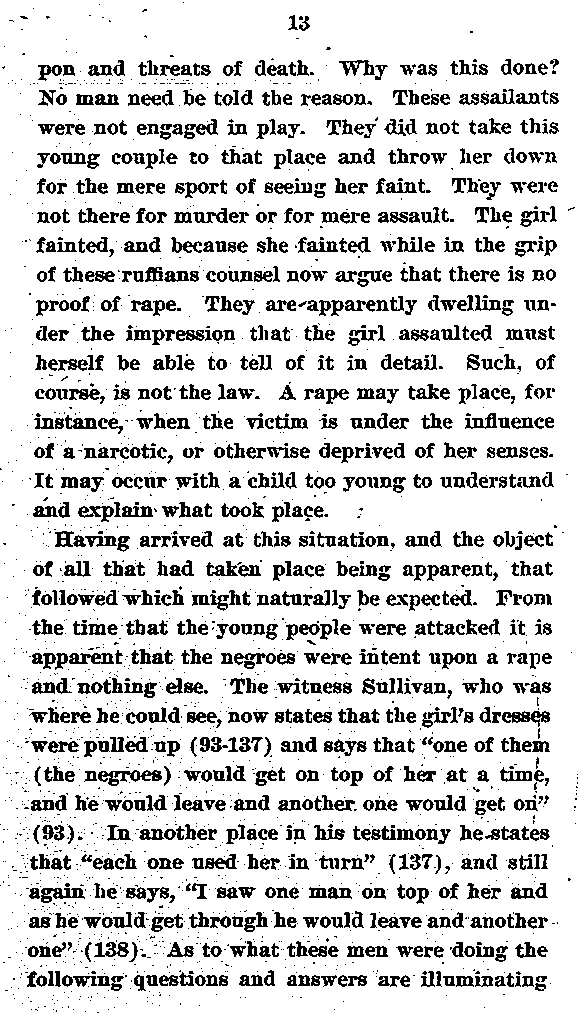
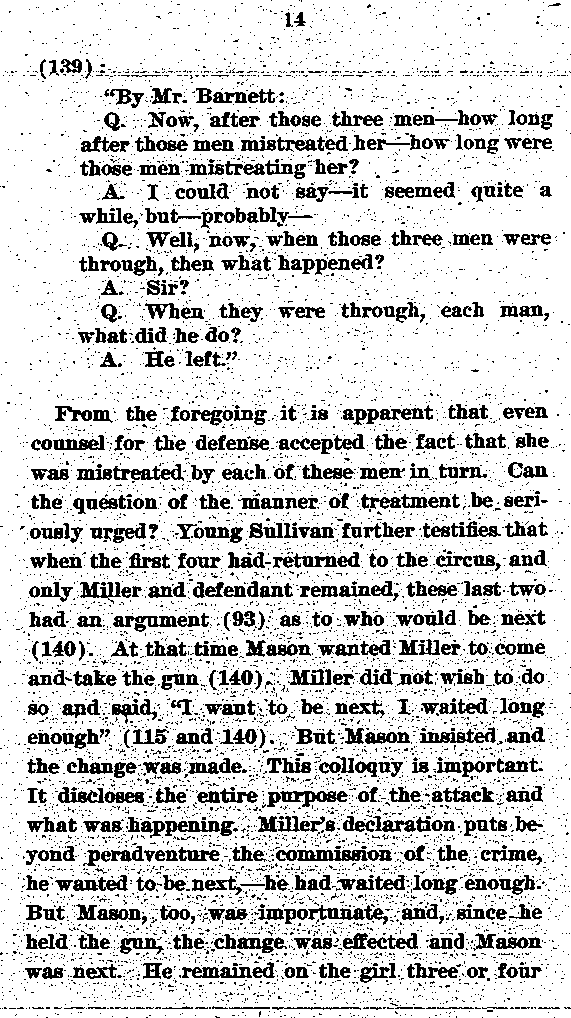
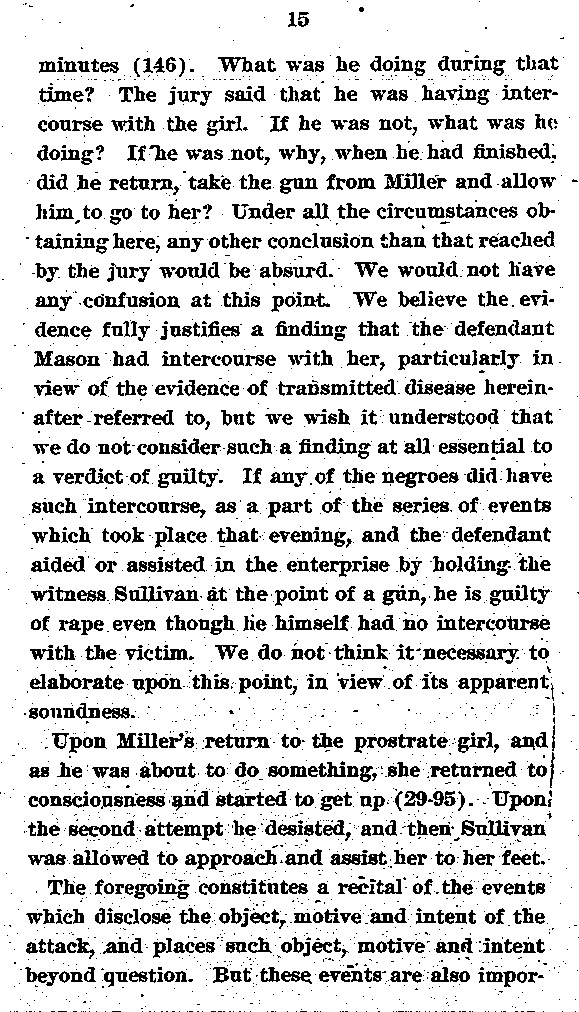
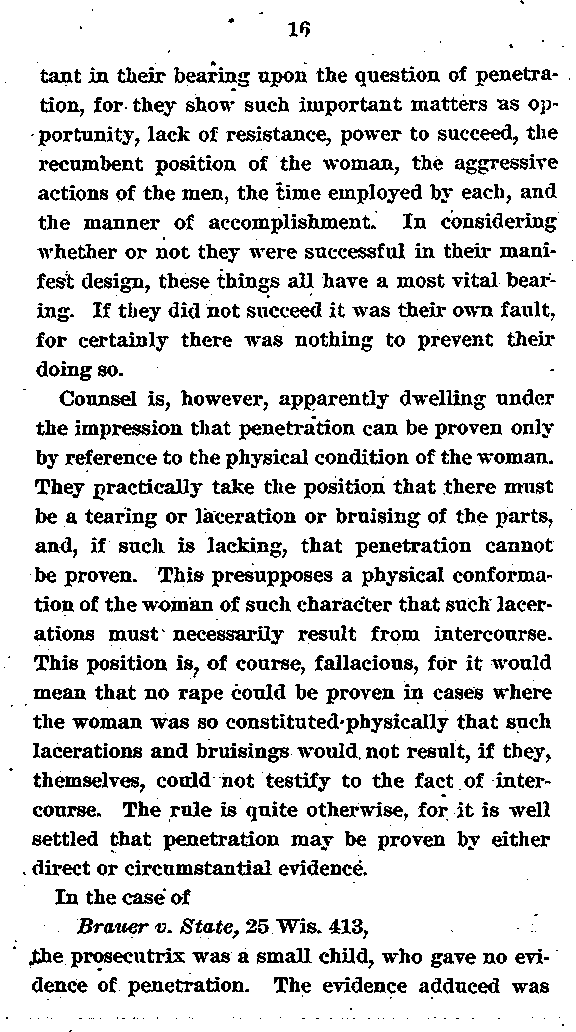
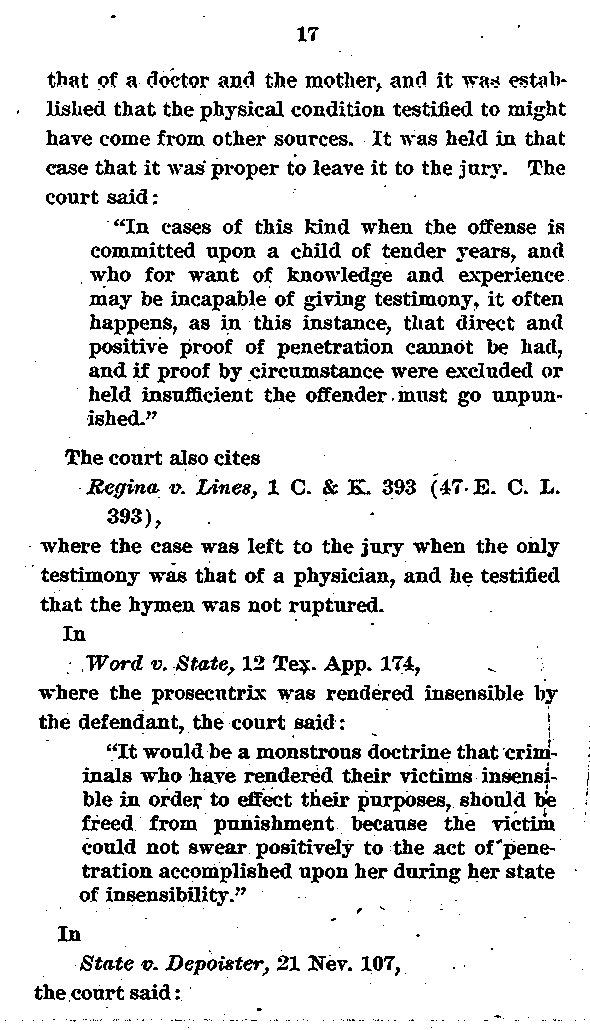
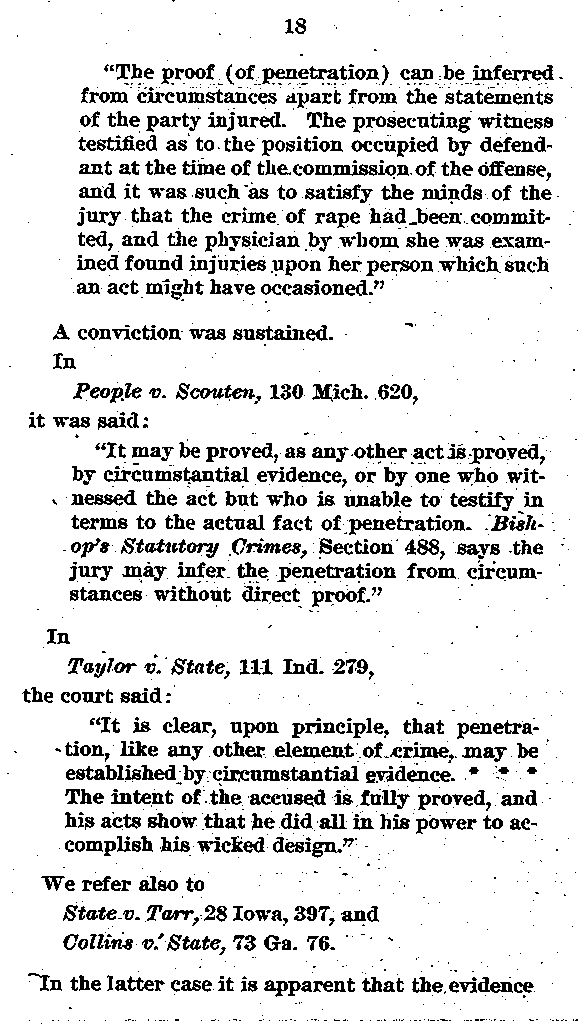
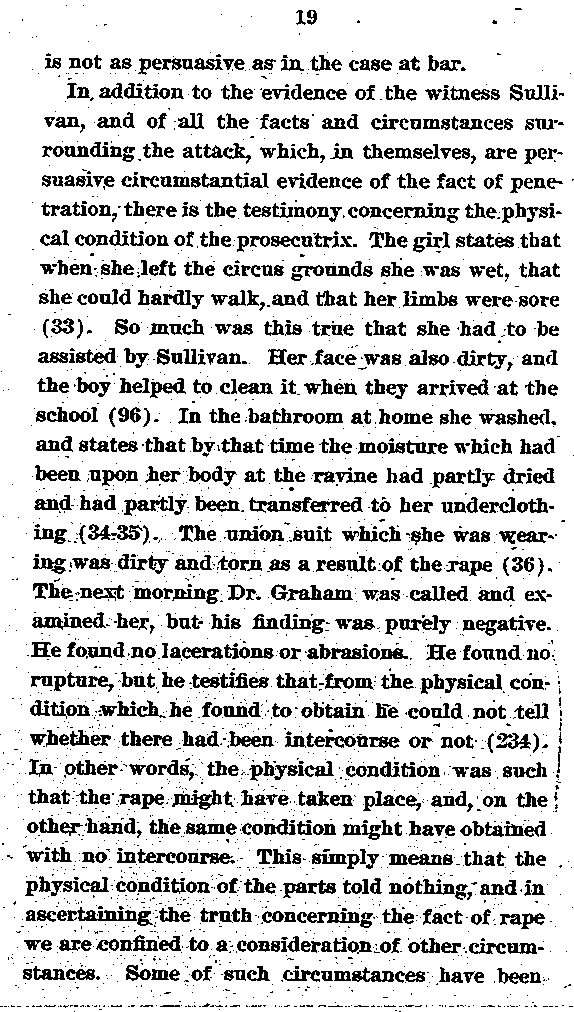

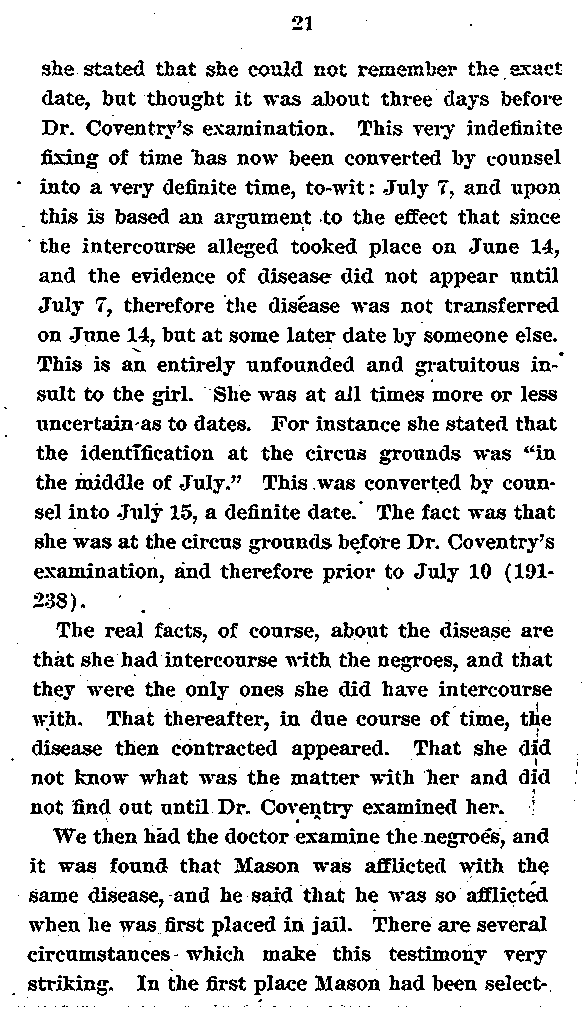
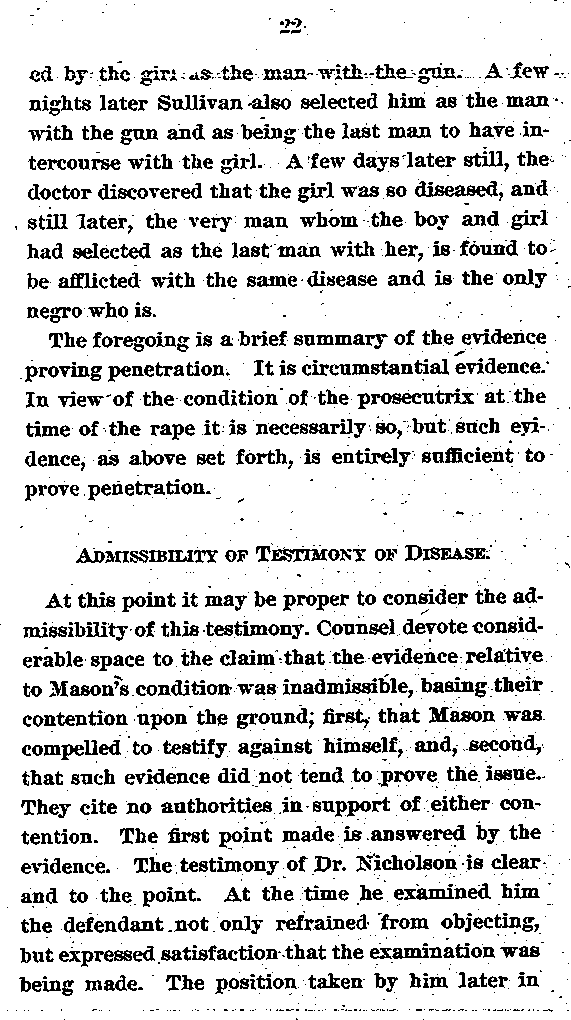
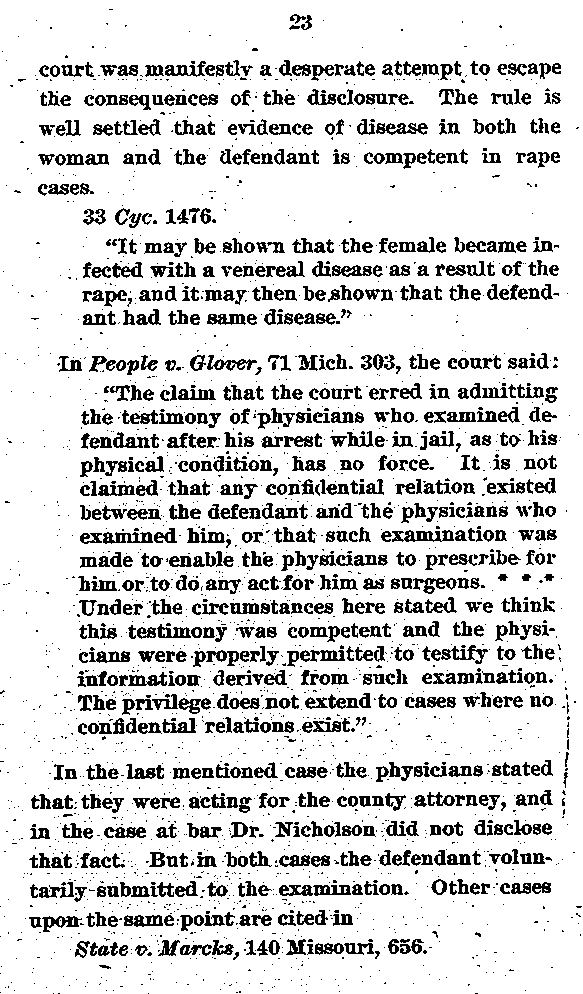
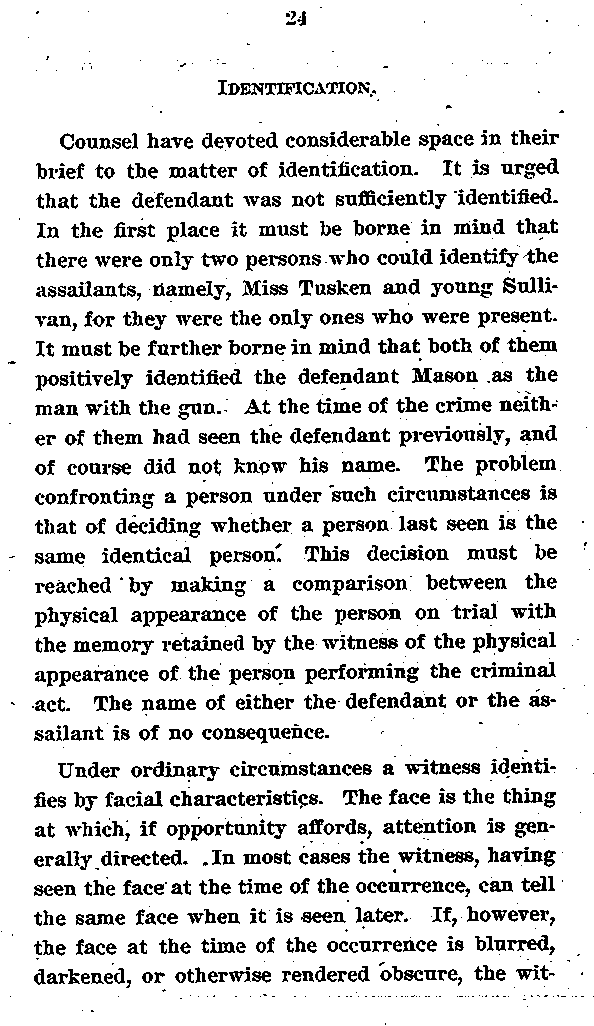



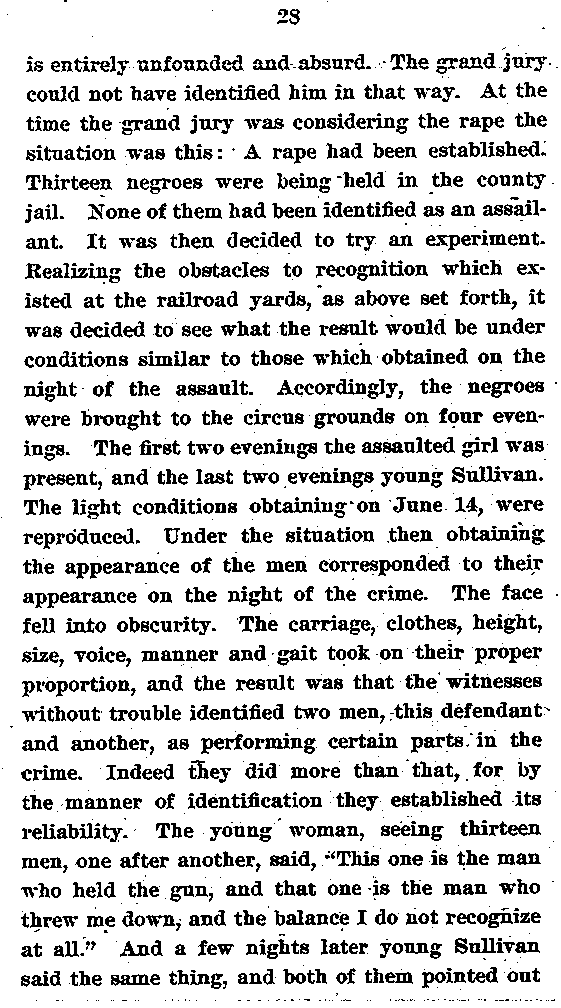
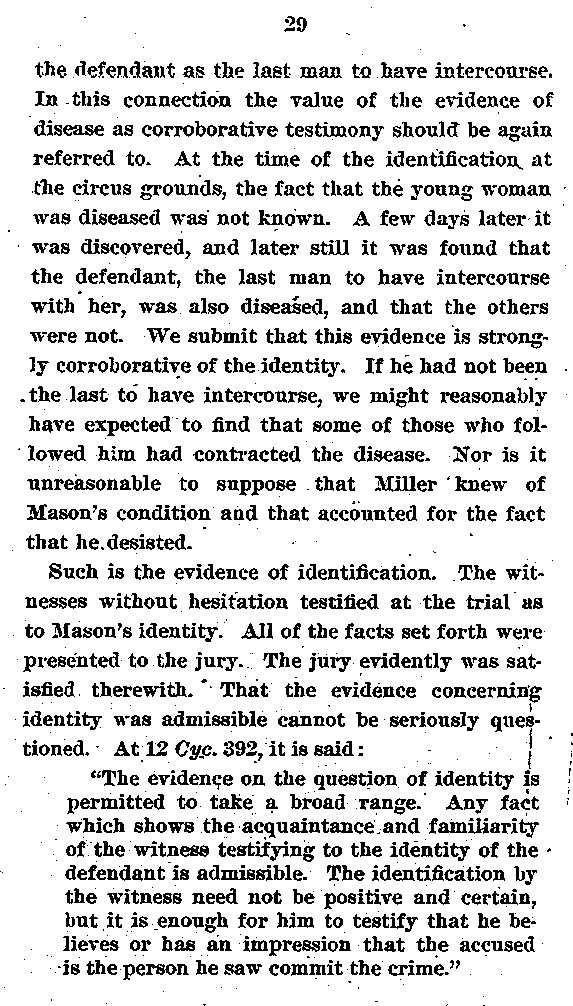
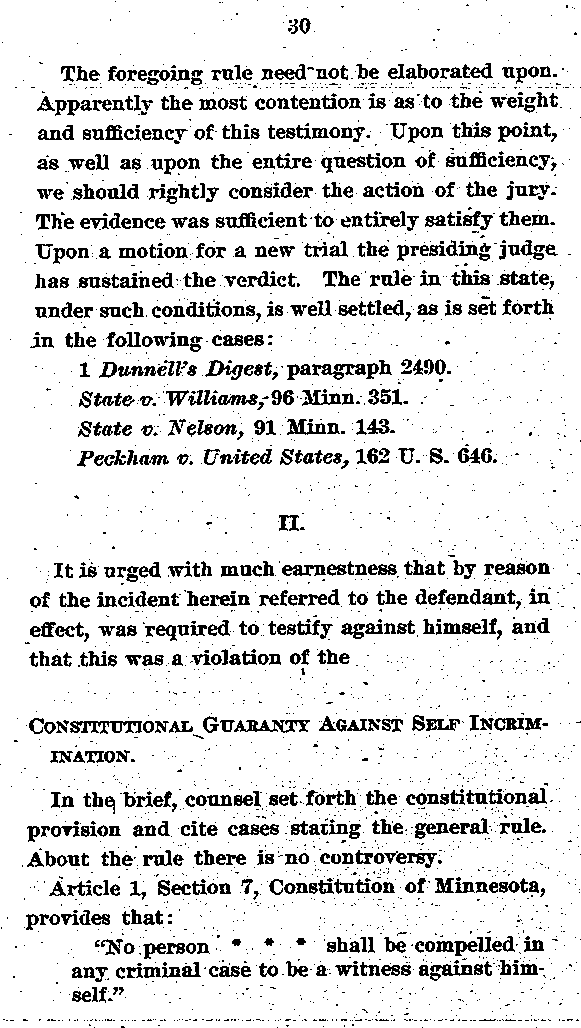
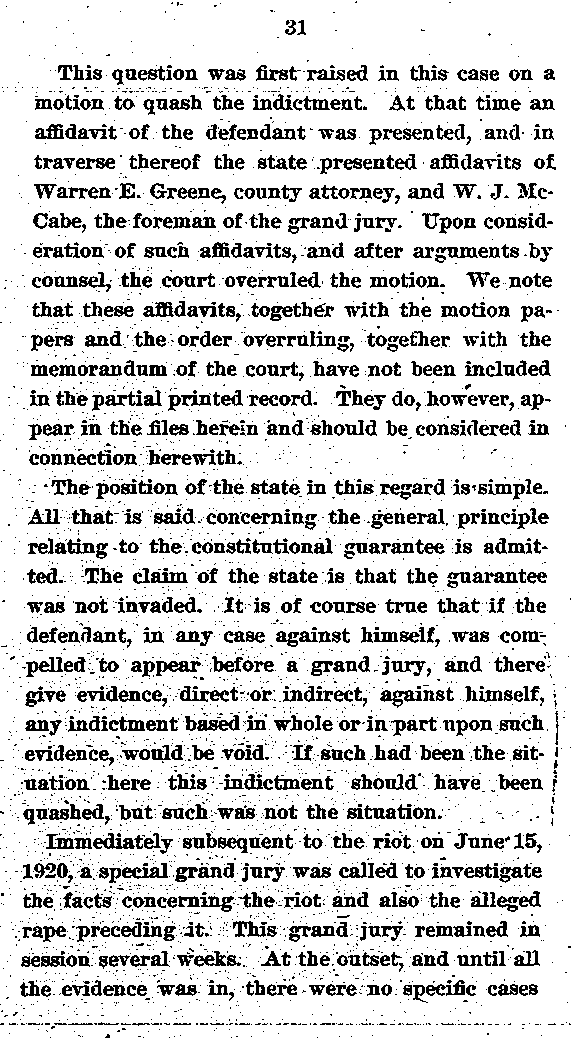
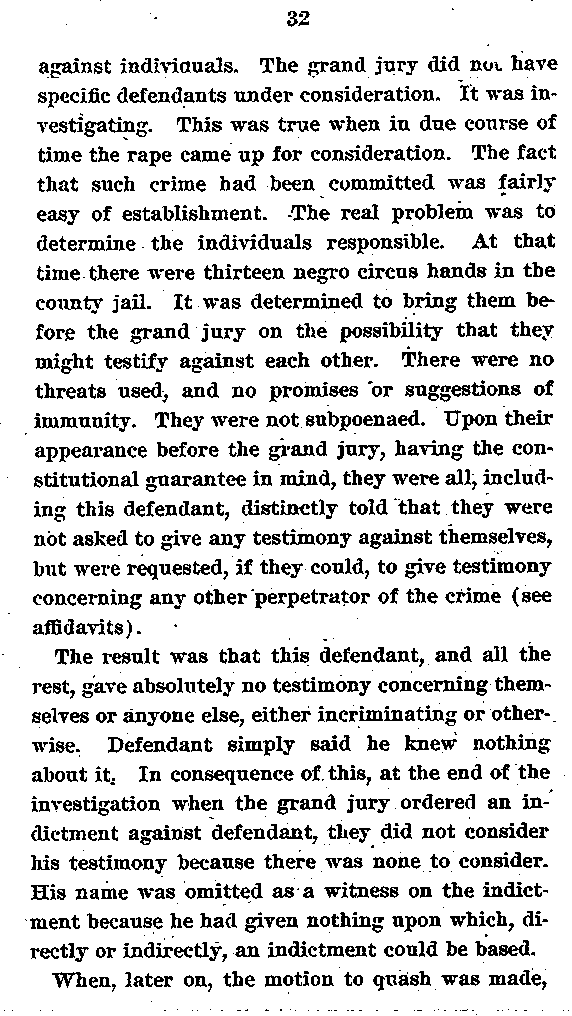

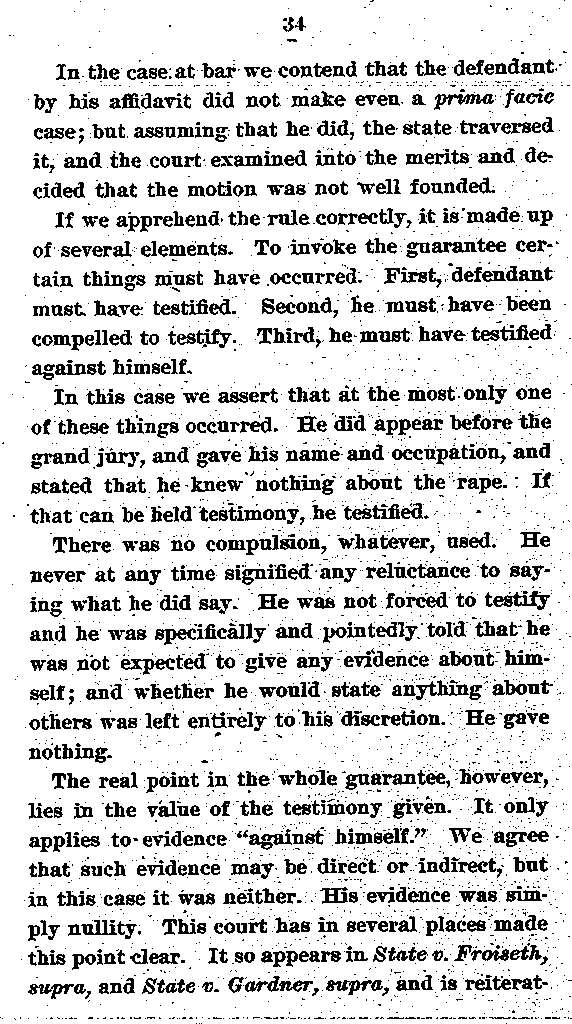

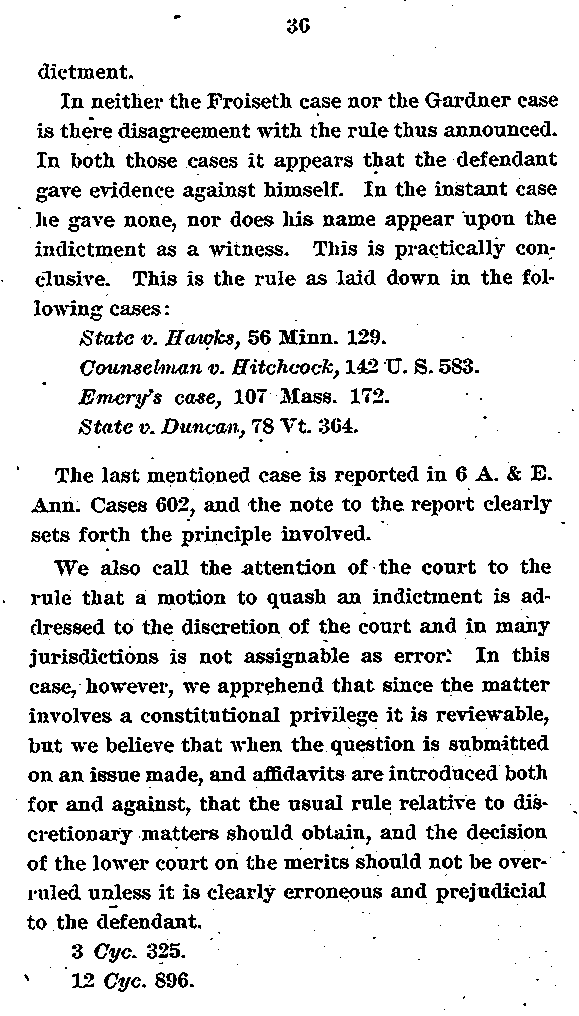

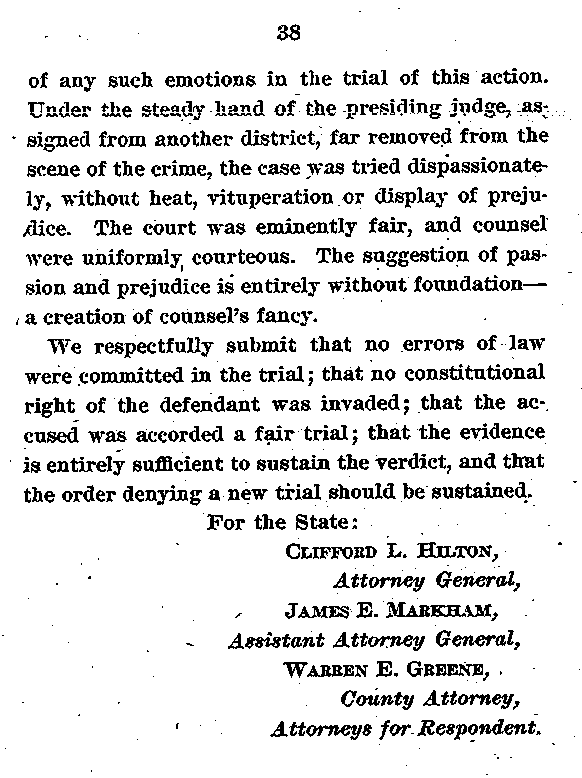
Image text
22590
_________________________
State
of Minnesota,
In Supreme
Court.
1922.
_______
THE
STATE OF MINNESOTA,
Respondent,
vs.
MAX
MASON
Appellant.
_________
Brief
and Argument for the State.
__________
CLIFFORD L. HILTON,
Attorney General,
JAMES E. MARKHAM,
Assistant Attorney General,
WARREN E. GREENE,
County Attorney,
Attorneys for
Respondent.
________________________________________________________
Hayward
Brief Company, 513 Fourth Ave. So., Minneapolis
State of Minnesota,
In Supreme Court.
1922.
_______
THE STATE OF MINNESOTA,
Respondent,
vs.
MAX MASON
Appellant.
_________
Brief and Argument for the State.
__________
STATEMENT OF THE CASE.
This is an appeal from the order of the district court of St. Louis county denying the defendant's application for a new trial after conviction by the verdict of a jury of the crime charged in the indictment.
This court has ordered that the case be heard upon the typewritten transcript of the proceeding had in the court below and included in a settled case containing all the evidence. There is a partial printed record, which contains a copy of the indictment, the motion for a new trial, the order denying it, with the accompanying memorandum of the trial judge, and some excerpts from the evidence. We assume that the court will find occasion
2
to examine the complete record, and accordingly our numerical references in this brief are to the pages of the original transcript, which is on file in the office of the clerk.
By the indictment the defendant was accused of the crime of rape, committed upon one Irene Tusken, at the city of Duluth, on June 14, 1920. The facts are as follows:
The defendant, a colored man, was employed by the Robinson Circus. This circus came to Duluth on Sunday, June 13, 1920, and was opened to the public on the following day (373). The show grounds were located at about Thirty-fifth avenue west (31), in a large open field lying north of Grand avenue and south and west of the Duluth, Missabe & Northern Railroad tracks (12-83). These tracks run north from the ore docks across Grand avenue, and ascended the hill in a wide curve to the northwest (Exhibit A). There were electric lights strung all along these tracks (22-23), which at all points were considerably elevated above the circus grounds, but were at some distance from them (Exhibit A).
The defendant was attached to the cook tent or waiters' crew (373), and on the day in question performed his usual work of waiting on table at the time of the evening meal (374). When that work was finished he joined the rest of the waiters in taking down the tent and placing it on wagons (374) This work was finished at 7:30 P.M. (374). It was his claim that thereafter he was engaged in moving seats in the big tent and therefore was not
3
implicated in the rape which took place in the open
(375-376).
In order to understand the facts in the case, the location of the tracks, the lights mentioned, and the various circus tents should be considered. The entrance to the circus grounds was from Grand avenue at a point about a block west of the tracks (Exhibit A, 12-83-85). Proceeding north from Grand avenue on to the grounds, one passed beneath an arch which stood a few feet from the street (Exhibit A, 17-18-85). Extending north from this arch was an open passageway on both sides of which were sideshow tents and other circus paraphernalia (Exhibit A, 14-17-85). At the end of this passageway or street was the entrance to the menagerie tent, which was a large enclosure (Exhibit A, 14-17-85). Passing through the menagerie tent and still proceeding north, one came to a short covered passage leading into the main tent or Big Top (Exhibit A, 14-17- 85). This was an enclosure about 150 feet long and nearly as wide.
If, however, after passing through the arch menagerie instead of going up the passageway one turned to the left and passed behind the sideshow tents, he would follow a road which ran up into the lot to the west of the sideshows, the menagerie and the Big Top (87-88). Beyond and to the west of this road were situated the horse tents and the cook tents.
Irene Tusken, the complaining witness, a young woman nineteen years of age (10) on the date of the crime resided with her parents at 4836 west
4
Sixth street (10). On the evening of that date, in company with two other girls, she left home about eight o'clock for the purpose of going to the circus grounds (11). They arrived there about 8:30, and shortly after their arrival met two or three young men of their acquaintance (13-15-86).
Among these was one named James Sullivan, a high school boy, who had known Miss Tusken for two or three years, and during the year previous had been showing her attentions (13). After meeting the young men Sullivan and Miss Tusken went off by themselves and did not see the others again (15-86). For about three-quarters of an hour they wandered around in the passageway looking at the sideshows and the other circus sights. They did not enter any of the tents (16-86). Then both heard the curfew whistle at 9:00 o'clock (19-86), and about a quarter of an hour afterwards were down near the arch and talking of going home (48-87). At this time they noticed that the animals were being removed from the menagerie, --that the tent was being struck, and so decided to go up and watch the process (20-21-87). They passed behind the sideshows, along the road to the west above mentioned (20-87-88-89), and came to a point north of the sideshow tent, west of the menagerie and southwest of the Big Top (20-22-88). Upon their arrival they noticed that there were a number of other spectators standing around (21-88) watching the negro workmen carry boards and poles and other circus props to the wagons (21-22-87). The young couple stood there for some time until they
5
noticed, that, apparently, the other spectators had departed (22-56-90). Then they turned to go back the way they had come (23-50-90).
On turning around they were suddenly confronted by five or six negroes who blocked their passage (23-50-90). One of these negroes placed a gun at Sullivan's head (23-50-90-133), and threatened to blow his brains out if he spoke. The girl screamed (27-51-91-132), and one of the negroes seized her by the arm and placed a hand over her mouth (27-91-132). At this time there were people over in the passageway (56-119-120-121), but apparently they did not hear the scream, and the young couple were in a position where they could not be seen by them (109-119-120-121). The negroes then took a ring from the girl's finger, but a moment later returned it to her (23-52-91). Others took the boy's pocketbook and searched one of his pockets, but obtained nothing (126). Some of the negroes then seized the Girl and walked her across the lots in a westerly direction to a ravine about a block away (25-52-91-130). The boy was forced by the man with the gun to follow immediately behind (25-91-130). One of the men with the girl, being the same one who placed his hand over her mouth, was later identified by both of them as William Miller (27-30-57-95-138), and the man with the gun was so identified as this defendant Mason (30-57-93-95).
Upon arriving at the ravine the girl was thrown to the ground while the boy was halted some eight or ten feet away (26-56-92). Upon being thrown down the girl fainted (29-57). The negroes then
6
pulled up her skirts and one after the other got on her (93-137). As fast as they finished they arose and walked off in the direction of the circus. At the end there were only two left, Miller and Mason (93-94-139). Mason then told Miller to come and take the gun, --that it was his turn.
Miller demurred and they had some argument, but finally did change places (94-115-140). Miller took the gun and guarded the boy while Mason went to the girl and got upon her (94-141). When he was through he returned to the boy, took the gun, and Miller went back to the girl (95-141).
About the time Miller was over her the girl regained consciousness and raised up (29-30-95-142). Miller pushed her back, but upon her struggling to get up a second time he desisted (29-58-95-142). Apparently he did not have connection with her. Sullivan then went to her and assisted her to her feet (29-59-95-142). They started back towards the circus but the negroes (Mason and Miller) told them to go west, across the ravine and they (29-59-95-143). The girl was lame, sore and bruised, and had difficulty in walking, and Sullivan was obliged to help her (31-33). At this time she was wet between her legs and on her private parts (33). They went across lots to about Fortieth avenue west, and there sat for a few moments on the steps of the Merritt School (32-60-96). Miss Tusken's face was dirty and Sullivan tried to clean it with his handkerchief (96). After a little while they walked to Grand avenue, which was the nearest car line, and took a car to Forty-ninth avenue
7
west from whence they walked to the Tusken home
(32-61-96).
Upon arrival there they talked for a few minutes more on the steps and then parted. The girl then went upstairs and repaired at once to the bathroom for the purpose of washing (33). By this time the moisture mentioned had partly dried on her person, and had partly been transferred to her underclothing (35). She then undressed. She was wearing as an undergarment a union suit Before the encounters with the negroes his had been clean and whole. As a result of the encounters it was torn and dirty around the front (36). The girl said nothing to her parents about what had happened. She went to bed and after some time of wakefulness fell asleep (38). In the meantime the boy had gone to his home and thence to his work, which was that of boat spotter on the ore docks. His hours of work at that time were from midnight to eight in the morning (82-97). He worked under his father who was assistant agent at the docks (174). Shortly after going to work the boy sought out his father and told him what had happened (97-175 The-father immediately called Mr. Tusken, the girl's father on the telephone. (98-175) He at once called his wife and she aroused the girl and questioned her (38-183). As a result of this Tusken called back to Sullivan (39-98-175-183), and the latter at once got in touch with the police (176). The railroad yards were communicated with, and, it being found that the circus train was still in the city it was held at the Canadian
8
Northern yards (176).
A little after daylight, the police, with the boy, and the girl, went to the railroad yards and an inquiry was made (41-58-100-195). It was found that the only crews idle at the time of the rape were the Big Top crew and the waiters (195-202).
These crews were examined and the young people looked them over. They were, however, unable in the daylight to identify their assailants by their faces (58-112-154-155), and were, besides, highly nervous and excited (116-189). It is to be noted that when the attack took place at the circus grounds it was dark, the only light at the place of the attack being from the railroad tracks some distance away (23-57-92-112), and that the faces of the negroes were also dark (62-78-118). The police, however, picked out certain of the negroes and took them to headquarters for further investigation (195-204-208). There they were subjected to an examination, as a result of which six were held and the others released (204-2209). Some of the six admitted their guilt and gave information about others, who, in the meantime, had gone on with the circus to Virginia, Minnesota (195-196-208).
Upon obtaining this information the chief of police and two other officers drove to Virginia at once. There they arrested ten negroes among whom was the defendant (196-209). Four of these ten they took in their car and at about eight o'clock in the evening started back for Duluth. (198-210). They arrived there shortly after eleven on the 15th
9
day of June (199). In their absence a riot had occurred. The Duluth police headquarters had been stormed by a mob, and the two negroes who had admitted guilt and given information of others, together with another negro had been taken out and lynched (205-211).
For several days after the rape the complainant was in a nervous, excitable and hysterical condition, and confined to her bed (184-185-190). The day after the riot a special grand jury was ordered to consider the lynching and the rape. This grand jury continued in session several weeks and examined considerably over a hundred witnesses. In due course the boy and girl came before them. They were still unable to identify any of the negroes by their faces. They did know the build, stature, size, walk, carriage, general appearance and the voices of certain ones. It was then decided to try them under similar light conditions, where the faces would have the same appearance as on the night of the rape, so the following plan was adopted and carried out.
Miss Tusken and her father, with the county attorney, went to the circus grounds at 9:15 in the evening (42-74). In the testimony the young lady said it was about the middle of July. In fact, it was just prior to July 10, and the length of the day was about the same as on June 14. They stood as near to the place where the couple was first attacked as could be ascertained (65). The lights were on the ore docks as on that occasion (65), and the light conditions about similar (43-71-101-
10
169-170) The negroes were conveyed to the grounds by the sheriff, and were brought before the young woman one by one (66-74). The county attorney asked each his name and a number of other questions in order that his voice might be heard (64-74). This was as done on two successive nights. There were then in the county jail thirteen negroes. Six were brought down the first night and seven the next (64): After a negro had been questioned and observed, he would be send back to the car and the girl would be asked if she recognized him. Seeing them in this way she identified Mason as the man who held the gun (44-63-66-67), and Miller as the man a who put his hand over her mouth and threw her to the aground, and as the one remaining with Mason at the end of the affair (63-70). She could not identity any of the others (64.
On the following two nights young Sullivan, his father and the county attorney went through the same procedure (101-168). And then a strange thing happened, young Sullivan picked exactly the same two men who had been previously picked by the girl for the same acts, and was unable to pick any others (103-171).
Still another step was then taken by the authorities. On the day after the rape Dr. Graham had examined the girl and had not found any lacerations or tears. He did find that the girl was capable of having had intercourse without its leaving such effects (234). He made no examination for disease. Since this evidence proved nothing it was thought best to have another examination. The
11
county attorney therefore requested Dr. W. A. Coventry to make it. This was done on July 10, subsequent to the identification at the circus grounds (191-238). He found that the young woman was infected with a venereal disease which was apparently of recent origin (238). The undisputed testimony is that the only person who ever had intercourse with her were the negroes (255). Dr. Coventry was then requested to examine the negroes confined at the jail. This was done by his colleague Dr. Nicholson, who found that the only negro so infected was the defendant Mason (249); that he was infected with the same disease, and according to his statement to the doctor, was so infected when first confined in the jail (253). It is to be noted, also, that it is shown by the evidence that he was the last one of the negroes who had intercourse with the girl.
ARGUMENT.
I.
Upon the facts stated there would seem to be no substantial doubt of the sufficiency of the evidence to justify the jury in returning a verdict of guilty. However, we will briefly discuss the appellant’s contentions as to the
SUFFICIENCY oh THE EVIDENCE
The argument of the defendant on this point really treated under two heads. It is claimed that
12
the evidence is insufficient in the matter, first, of penetration, and, second, of identification, and incidentally it is urged that the evidence relative to disease was improper. We will consider these matters under separate headings.
PENETRATION.
It is urged by counsel that the only evidence of penetration is the testimony of the boy Sullivan. This ignores a great mass of other evidence which must have been most persuasive with the jury.
In the first place it must, be acknowledged that the jury decided that an attack by a group of negroes took place. This finding rests upon what is indisputably sufficient evidence. What is contended for by defendant is that the attack did not result in a rape. In determining this question we should first concern ourselves with the object of the attack, for, if we discern the object, we are considerably advanced upon the road to discovering what occurred. What was the object? Manifestly it was not larceny, for the assailants took the young lady's ring and then returned it They went through some of the boy's pockets, but not all of them. If larceny had been the object they would have released them both after taking what little they had. Instead of that they seized he girl and conveyed her to a remote part of the grounds. Why? The question is answered by their conduct upon their arrival there. They threw her to the ground and detained the boy by display of a wea-
13
pon and threats of death. Why was this done? No man need be told the reason. These assailants were not engaged in play. They did not take this young couple to that place and throw her down for the mere sport of seeing her faint. They were not there for murder or for mere assault. The girl fainted, and because she fainted while in the grip of these ruffians counsel now argue that there is no proof of rape. They are apparently dwelling under the impression that the girl assaulted must herself be able to tell of it in detail. Such, of course is not the law. A rape may take place, for instance, when the victim is under the influence of a narcotic, or otherwise deprived of her senses. It may occur with a child too young to understand and explain what took place.
Having arrived at this situation, and the object of all that had taken place being apparent, that followed -which might naturally be expected. From the time that the young people were attacked it is apparent that the negroes were intent upon a rape and nothing else. The witness Sullivan, who was where he could see, now states that the girl's dresses were pulled up (93-137) and says that "one of them (the negroes) would get on top of her at a time, and he would leave and another one would get on" (93). In another place in his testimony he states that "each one used her in turn" (137), and still he says, "I saw one man on top of her and as he would get through he would leave and another one” (138). As to what these men were doing the following questions and answers are illuminating
14
(139):
"By Mr. Barnett:
Q. Now, after those three men—how long after those men mistreated her—how long were those men mistreating her?
A. I could not say—it seemed quite a while, but—probably—
Q. Well now, when those three men were through, then what Happened?
A. Sir?
Q. When they were through, each man,
what did he do?
A. He left.”
From the foregoing it is apparent that even counsel for the defense accepted the fact that she was mistreated by each of these men in turn. Can the question of the manner of treatment be seriously urged? Young Sullivan further testifies that when the first four had returned to the circus, and only Miller and defendant remained, these last two had an argument (93) as to who would benefit (140). At that time Mason wanted Miller to come and take the gun (140) Miller did not wish to do so and said, "I want to be next, I waited long enough” (115 and 140). But Mason insisted and the change was made. This colloquy is important. It discloses the entire purpose of the attack and what was happening. Miller's declaration puts beyond peradventure the commission of the crime, he wanted to be next, —he had waited long enough. But Mason, too, was importunate, and, since he held the gun, the change was effected and Mason was next. He remained on the girl three or four
15
minutes (146). What was he doing during that time? The jury said that he was having intercourse with the girl. If he was not, what was he doing? If he was not, why, when he had finished did he return, take the gun from Miller and allow him to go to her? Under all the circumstances obtaining here, any other conclusion than that reached by the jury would be absurd. We would not have any confusion at this point. We believe the evidence fully justifies a finding that the defendant Mason had intercourse with her, particularly in view of the evidence of transmitted disease herein after referred to, but we wish it understood that we do not consider such a finding at all essential to a verdict of guilty. If any of the negroes did have such intercourse, as a part of the series of events which took place that evening, and the defendant aided or assisted in the enterprise by holding the witness Sullivan at the point of a gun, he is guilty of rape even though he himself had no intercourse with the victim. We do not think it necessary to elaborate upon this point, in views of its apparent soundness.
Upon Miller's return to the prostrate girl, and as he was about to do something, she returned to consciousness and started to get up (29-95). Upon the second attempt he desisted, and then Sullivan was allowed to approach and assist her to her feet.
The foregoing constitutes a recital of the events which disclose the object, motive and intent of the attack, and places such object, motive and intent beyond question. But these events are also impor-
16
tant in their bearing upon the question of penetration for they show such important matters as opportunity, lack of resistance, power to succeed, the recumbent position of the woman, the aggressive actions of the men, the time employed by each, and the manner of accomplishment. In considering whether or not they were successful in their manifest design, these things all have a most vital bearing. If they did not succeed it was their own fault, for certainly there was nothing to prevent their doing so.
Counsel is, however, apparently dwelling under the impression that penetration can be proven only by reference to the physical condition of the woman. They practically take the position that there must be a tearing or laceration or bruising of the parts, and, if such is lacking, that penetration cannot be proven. This presupposes a physical conformation of the woman of such character that such lacerations must necessarily result from intercourse. This position is, of course, fallacious, for it would mean that no rape could be proven in cases where the woman was so constituted physically that such lacerations and bruisings would, not result, if they, themselves, could not testify to the fact of intercourse. The rule is quite otherwise, for it is well settled that penetration may be proven by either direct or circumstantial evidence.
In the case of
Brauer v. State, 25 Wis. 413,
the prosecutrix was a small child, who gave no evidence of penetration. The evidence adduced was
17
that of a doctor and the mother, and it was established that the physical condition testified to might have come from other sources. It was held in that case that it was proper to leave it to the jury. The court said:
"In cases of this kind when the offense is committed upon a child of tender years, and who for want of knowledge and experience may be incapable of giving testimony, it often happens, as in this instance, that direct and positive proof of penetration cannot be had, and if proof by circumstance were excluded or held insufficient the offender must go unpunished."
The court also cites
Regina v. Lines, 1 C. & K. 393 (47 E. C. L. 393),
where the case was left to the jury when the only testimony was that of a physician, and he testified that the hymen was not ruptured.
In
Word v. State, 12 Tex. App. 174,
where the prosecutrix was rendered insensible by the defendant, the court said:
“It would be a monstrous doctrine that criminals who have rendered their victims insensible in order to effect their purposes, should be freed from punishment because the victim could not swear positively to the act of penetration accomplished upon her during her state of insensibility.”
In
State v. Depoister, 21 Nev. 107,
the court said:
18
"The proof (of penetration) can be inferred from circumstances apart from the statements of the party injured. The prosecuting witness testified as to the position occupied by defendant at the time of the commission of the offense, and it was such as to satisfy the minds of the jury that the crime of rape had been committed, and the physician by whom she was examined found injuries upon her person which such an act might have occasioned."
A conviction was sustained.
In
People v. Scouten, 130 Mich. 620,
it was said:
"It may be proved, as any other act is proved, by circumstantial evidence, or by one who witnessed the act but who is unable to testify in terms to the actual fact of penetration. Bishop’s Statutory Crimes, Section 488, says the jury may infer the penetration from circumstances without direct proof."
In
Taylor v. Mate, 111 Ind. 279,
the court said:
"It is clear, upon principle, that penetration, like any other element of crime, may be established by circumstantial evidence. The intent of the accused is fully proved, and hid acts show that he did all in his power to accomplish his wicked design."
We refer also to
State v. Tarr, 28 Iowa, 397, and
Collins v. State, 73 Ga. 76.
In the latter case it is apparent that the evidence
19
is not as persuasive as in the case at bar.
In addition to the evidence of the witness Sullivan, and of all the facts and circumstances surrounding the attack, which, in themselves, are persuasive circumstantial evidence of the fact of penetration, there is the testimony concerning the physical condition of the prosecutrix. The girl states that when she left the circus grounds she was wet, that she could hardly walk, and that her limbs were sore (33). So much was this true that she had to be
assisted by Sullivan. Her face was also dirty, and the boy helped to clean it when they arrived at the school (96). In the bathroom at home she washed, and states that by that time the moisture which had been upon her body at the ravine had partly dried and had partly been transferred to her underclothing (34-35). The union suit which she was wearing was dirty and torn as a result of the rape (36). The next morning Dr. Graham was called and examined her, but his finding was purely negative. He found no lacerations or abrasions. He found no rupture, but he testifies that from the physical condition which he found to obtain he could not tell whether there had been intercourse or not (234). In other words, the physical condition was such that the rape might have taken place, and, on the other hand, the same condition might have obtained with no intercourse. This simply means that the physical condition of the parts told nothing, and in ascertaining the truth concerning the fact of rape we are confined to a consideration other circumstances. Some of such circumstances have been
20
considered above. Others will now be alluded to.
The father of the girl testified that when they went to the police station in the early morning she appeared nervous and exhausted (189); that in the days following the crime she was nervous, excited, all in; exhausted, and hysterical, and that this condition existed for two or three days thereafter (190-191). The mother testified that upon her return to the house, after being at the railroad yards; on the morning following the attack, the girl went to bed and was in bed all the rest of the week (184); that for days she was hysterical and nervous and complained of aching all over (185). This is the condition that would be expected in one who had had the physical experience which she had undergone.
In addition to all this we have the testimony concerning a disease. It is unquestioned that this young girl never had intercourse with any man unless intercourse took place on the night in question with the negroes, and that she had never been afflicted with the disease in question. She so testified and there is not the slightest question of the truth thereof. The theory of the defense was that no attack, such as was alleged, ever took place. If that were true, then the young woman had never had intercourse with anyone; and yet, upon being examined on July 10,1920, it was found that she was afflicted with a venereal disease (238). Upon being asked when she first noticed a discharge, she said, "Ten days or two weeks after the l4th of June" (255). In cross examination counsel tried to pin her down to a definite date, but
21
